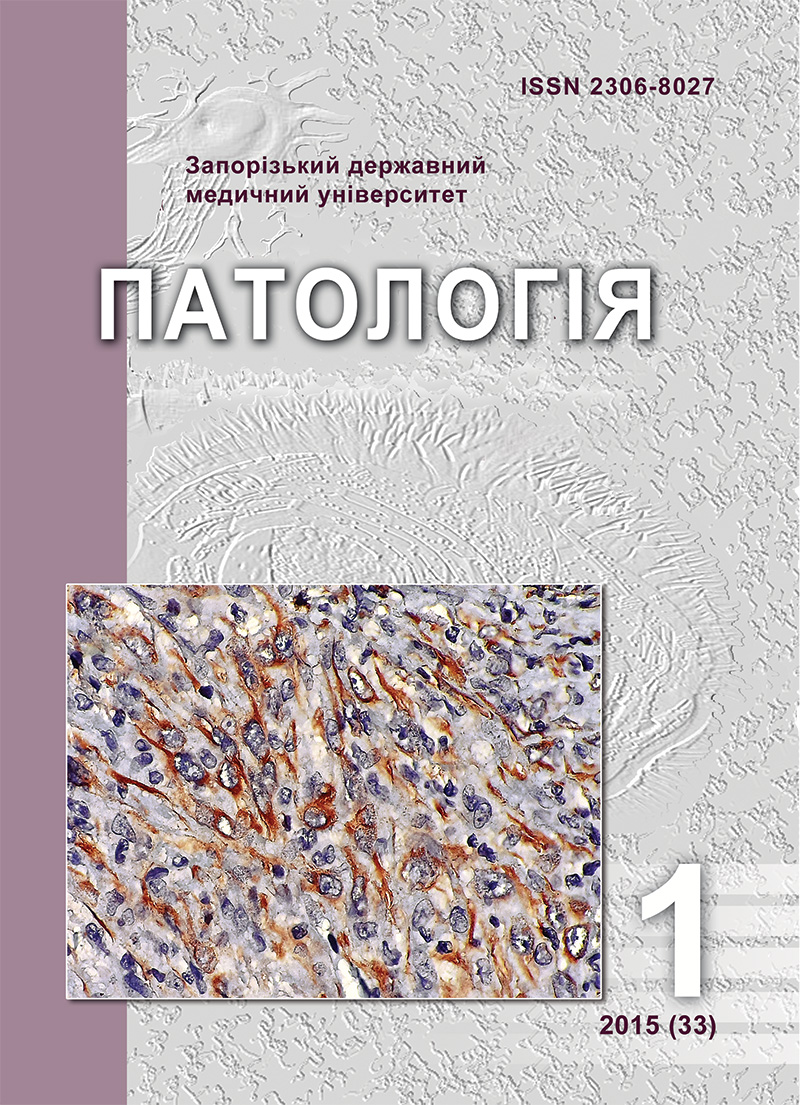Pulmonary infarct as a surgical pathology: morphology and differential diagnosis
DOI:
https://doi.org/10.14739/2310-1237.2015.1.42941Keywords:
Pulmonary Infarction, Morphology, Clinic-Laboratory ParametersAbstract
The actuality of the work is caused by considerable difficulties of verification of pulmonary infarction of small size in clinical practice, which leads to surgical interventions.
Aim. In order to clarify the characteristics of a pulmonary infarction in 4 patients with surgery for «nodule» in the lung and morphologically confirmed diagnosis of «pulmonary infarction» the medical history, clinical and laboratory data were studied and a thorough morphological study of surgical specimens was performed.
Methods and results. The data of modern literature were analyzed. It was found that the most frequent surgical pathology is pulmonary infarction of the small size at the stage of the organization. The cause of development, the main histological features characterizing pulmonary infarction, as well as differential diagnostic considerations were determined.
Conclusion. The presented material shows that morphological examination is the key in the diagnosis of pulmonary infarction in a number of clinical observations.
References
Abrikosov, A. I. (1947). Chastnaya patologicheskaya anatomiya. [Special pathological anatomy]. Moscow. [in Russian].
Esipova, I. K. (Ed). (1975). Legkoe v patologii. Chast` 2 [Lung in pathology]. Novosibirsk: Nauka. [in Russian].
Kalitievskij, P. F. (1987). Makroskopicheskaya differencial`naya diagnostika patologicheskih protsessov. [Macroscopic differential diagnosis of pathological processes]. Moscow: Medicina. [in Russian].
Chuchalina, A. G. (Ed). Pul`monologiya: nacional`noe rukovodstvo (2009). [Pulmonology: national leadership]. Moscow: GEOTAR-Media. [in Russian].
Sakharchuk, I. I. & Il`nickij, R. I. (2006). Vospalitelnyie zabolevaniya legkikh i plevry: differencial`naya diagnostika i lechenie [Inflammatory diseases of the lung and pleura: differential diagnosis and treatment]. Kyiv: Kniga plyus. [in Ukrainian].
Strukov, A. I. & Serov, V. V. (2004). Patologichna anatomiya [Pathological anatomy]. Kharkiv. [in Ukrainian].
Bray, T. J., Mortensen, K. H. & Gopalan, D. (2014). Multimodality imaging of pulmonary infarction. European Journal of Radiology, 83(12), 2240–54. doi: 10.1016/j.ejrad.2014.07.016.
Parambil, J. G., Savci, C. D., Tazelaar, H. D. & Ryu, J. H. (2005). Causes and presenting features of pulmonary infarctions in 43 cases identified by surgical lung biopsy. Chest, 127, 1178–1183.
Lisvet, T.T., Ileana, P.R., Rudy, H.O., et al. (2014). Clinical-pathological correlation of pulmonary thromboembolism in cardiovascular surgery. Cuban Society of Cardiology, 6(3), 217–222.
Tsao, M. S., Schraufnagel, D. & Wang, N. S. (1982). Pathogenesis of pulmonary infarction. American Journal of Medicine, 72 (4), 599–606.
Yousem, S. A. (2009). The surgical pathology of pulmonary infarcts: diagnostic confusion with granulomatous disease, vasculitis, and neoplasia. Modern Pathology, 22, 679–685. doi: 10.1038/modpathol.2009.20.
Downloads
How to Cite
Issue
Section
License
Authors retain copyright and grant the journal right of first publication with the work simultaneously licensed under a Creative Commons Attribution License that allows others to share the work with an acknowledgement of the work's authorship and initial publication in this journal.


